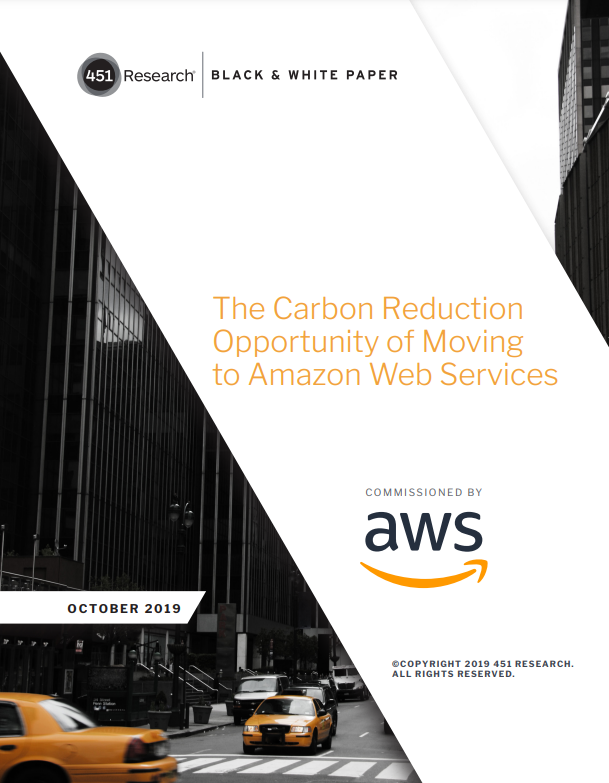
The Carbon Reduction Opportunity of Moving to Amazon Web Services
By AWSEnterprises use public cloud infrastructure for various reasons, but faster time-to-market and the ability to flexibly scale resources to track workload demand are the top two drivers, according to 451 Research’s Voice of the Enterprise survey on cloud, hosting and managed services. This is particularly true for organizations further down the line in their digital transformation, which shows enterprises increasingly value the agility and scalability of cloud as they grow more acquainted with it.
Moving workloads to public cloud infrastructure also presents enterprises with the opportunity to dramatically reduce the environmental footprint of their IT operations. Climate change and its effects direct more attention at resource efficiency as a key part of sustainability responsibility, which is of growing importance to businesses. In 2018, 86% of the companies in the S&P 500 index published a sustainability report, up from only 20% in 2011, notes the Governance and Accountability Institute.
Enterprises want to be seen as responsible corporate citizens, and many have made sustainability commitments and achieved progress in multiple areas of their operations. Yet even with an emphasis on sustainability, running data centers and IT is not a core competency of most enterprises, many of which lack the expertise and resources to make major investments in infrastructure efficiency. Similarly, most enterprises are not prepared for the effects of climate change (such as extreme weather conditions, drought or floods) on their data center operations.
To estimate the environmental benefits for enterprises moving to its public cloud infrastructure, Amazon Web Services commissioned 451 Research, a technology market research and advisory firm, to conduct a study on the energy and carbon efficiency of enterprise data centers and server infrastructure.
For this study, we focused on US enterprises with revenue between $10m and $1bn, businesses that face IT challenges similar to those of larger enterprises, often with smaller budgets and less IT expertise. Even when enterprises invest in newer infrastructure, they still have to provision for peak demand, and many energy-efficiency measures are only viable at the scale of thousands of servers and when applying advanced design techniques (e.g., efficiency-optimized custom servers, wide temperature bands and indirect evaporative cooling). This means that moving workloads to the cloud can help enterprises steeply reduce energy consumption and their carbon footprint compared to their internal operations.

